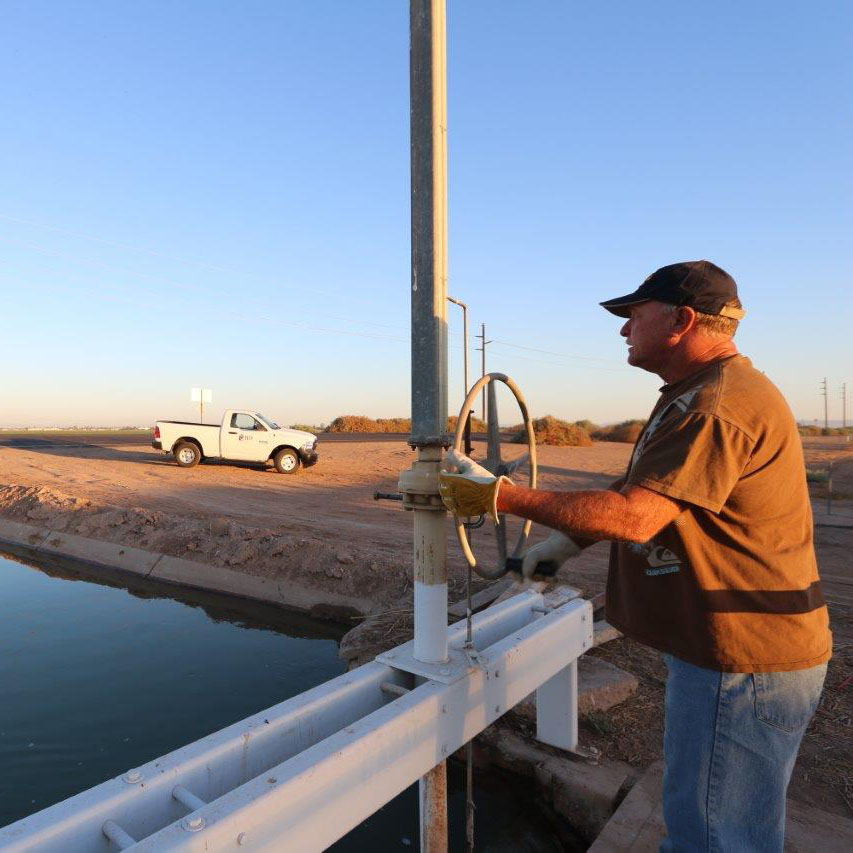In a decisive move to address the ongoing water crisis in the western United States, the Imperial Irrigation District (IID) Board of Directors approved a landmark conservation agreement on August 12, 2024. This agreement, forged in collaboration with the U.S. Bureau of Reclamation, will see up to 700,000 acre-feet of water left in Lake Mead through 2026. This initiative is part of a broader effort to mitigate the effects of the extended drought impacting the Colorado River Basin.
A Landmark Conservation Agreement
The System Conservation Implementation Agreement (SCIA) approved by IID marks a significant milestone in water conservation efforts within the Colorado River Basin. Under this agreement, the federal government will provide funding for IID to implement various conservation programs from 2024 to 2026. These programs aim to conserve up to 300,000 acre-feet of water annually, which will remain in Lake Mead to support the drought-stricken Colorado River system.
The SCIA includes the expansion of IID’s existing On-Farm Efficiency Conservation Program (OFECP) and the introduction of a new Deficit Irrigation Program (DIP). The OFECP encourages agricultural water users to adopt field-level conservation measures, while the DIP will fund the temporary idling of water-intensive crops such as Alfalfa, Bermuda grass, and Klein grass. These initiatives are designed to reduce water usage significantly and contribute to the broader goal of preserving water levels in Lake Mead.
Gina Dockstader, IID Director and President of the Salton Sea Authority emphasized the importance of this agreement, stating, “The decisive action taken by our Board today demonstrates how the District and our water users work together to make meaningful contributions to the Colorado River and the Salton Sea. We value the collaborative relationship with the Bureau of Reclamation that has allowed us to craft an agreement we can all support and make a difference.”
A Collaborative Effort with Far-Reaching Impact
The agreement is part of a larger, collaborative effort involving the seven Colorado River Basin states. In August 2022, Congress authorized the Inflation Reduction Act, which provided $4 billion in funding to the Bureau of Reclamation to address drought issues in the western United States, with a focus on the Colorado River Basin. The Lower Colorado River Basin System Conservation and Efficiency Program, established in October 2022, provides funding for near-term water conservation efforts through 2026. IID’s newly approved SCIA is the largest of its kind in terms of volumetric water conservation anywhere in the Colorado River Basin.
This conservation agreement builds on IID’s previous efforts, including a 2023 SCIA that saw the district conserve 100,000 acre-feet of water in Lake Mead. Combined with the new agreement, IID is on track to conserve more than 800,000 acre-feet of water through 2026, a significant contribution to California’s commitment to conserving up to 1.6 million acre-feet of water as part of the May 2023 Lower Basin Plan.
JB Hamby, IID Vice Chairman and Colorado River Commissioner for California highlighted the broader implications of IID’s efforts, stating, “IID’s efforts provide an example for other states and regions to follow as we plan for a drier future in the Colorado River basin. IID has cleared enormous hurdles to make this deal happen – there is no excuse for inaction anywhere along the river.”
Support for Imperial Valley Agriculture
The SCIA will fund the development of substantial volumes of conserved water over the next three years, complementing IID’s ongoing large-scale conservation and transfer programs. When combined with IID’s existing 2003 Quantification Settlement Agreement, these efforts are expected to result in the conservation of up to 750,000 acre-feet of water annually, representing approximately 24 percent of IID’s annual Colorado River entitlement.
IID has a long history of water conservation, having conserved over 7.7 million acre-feet of water since 2003. The district’s On-Farm Efficiency Conservation Program has been particularly effective, generating 1.5 million acre-feet of conserved water since 2013. In 2023 alone, IID conserved over 500,000 acre-feet of water, with 215,382 acre-feet generated by IID growers participating in the OFECP.
Imperial Valley remains a crucial agricultural region, with one in every six jobs directly tied to agriculture. The district’s commitment to water conservation is essential not only for the environment but also for the region’s economic stability. By adopting advanced irrigation technologies and sustainable farming practices, including the use of sprinklers, drip systems, field reconfiguration, and precision land-leveling, Imperial Valley farmers are playing a vital role in these conservation efforts.
Challenges and Future Implications
Despite these significant conservation efforts, the challenges facing the Colorado River Basin remain daunting. As of August 2024, Lake Mead is at just 33% of its capacity, meaning that even these latest conservation measures may not be enough to prevent emergency water cuts this summer. In 2021 and 2022, both Lake Mead and Lake Powell, the two largest reservoirs in the United States, fell below critical thresholds, prompting emergency cuts and federal intervention.
The new agreement between IID and the Bureau of Reclamation is designed to mitigate these challenges, but additional actions will be necessary to protect the Colorado River system in the long term. The final Supplemental Environmental Impact Statement for Near-term Colorado River Operations, drafted in 2023, underscores the need for continued conservation efforts across the entire Colorado River Basin.
The Environmental Assessment (EA) conducted by the Bureau of Reclamation in conjunction with this agreement highlights the potential environmental impacts of these conservation efforts. The EA notes that while the proposed actions will accelerate the lowering of the Salton Sea’s elevation, leading to earlier exposure of the shoreline and potential increases in fugitive dust emissions, these impacts are temporary and will taper off by 2045. The assessment concludes that the Proposed Action will not significantly affect the quality of the human environment within or adjacent to the project area, and therefore, an Environmental Impact Statement will not be required.




